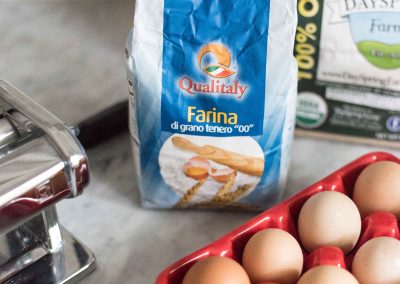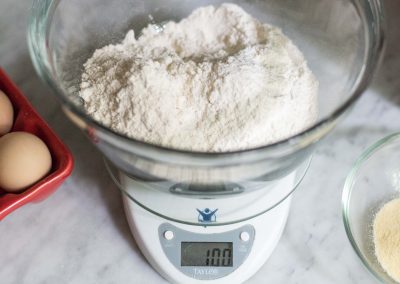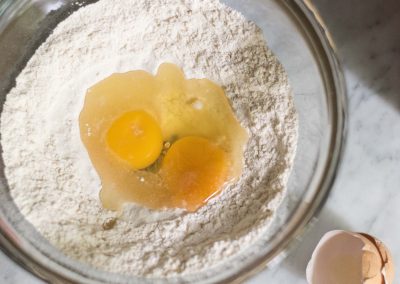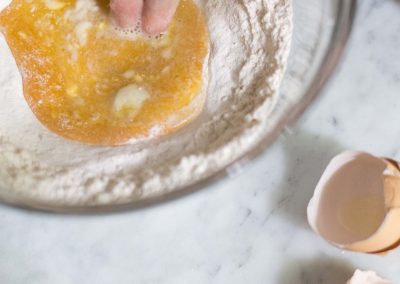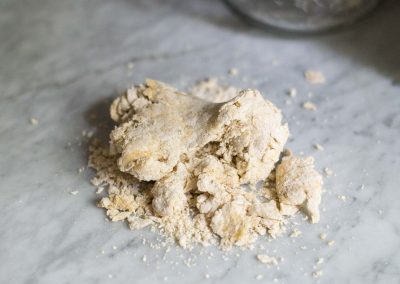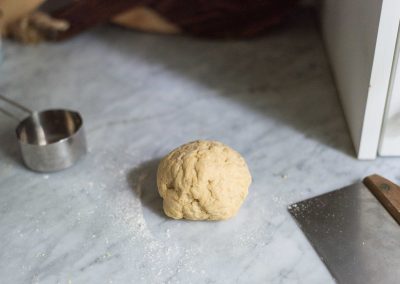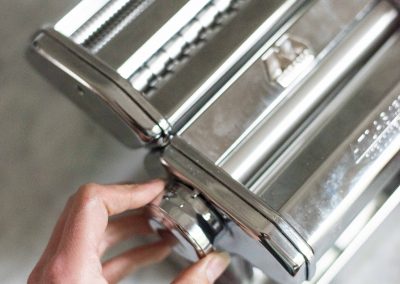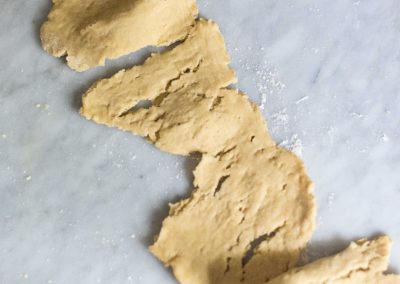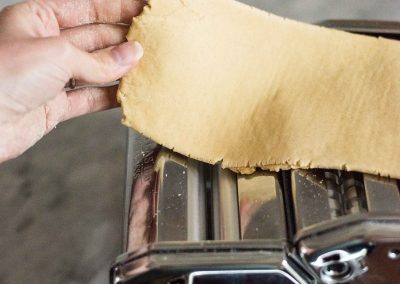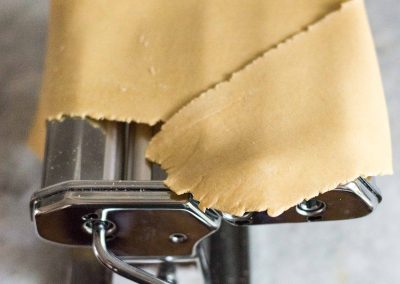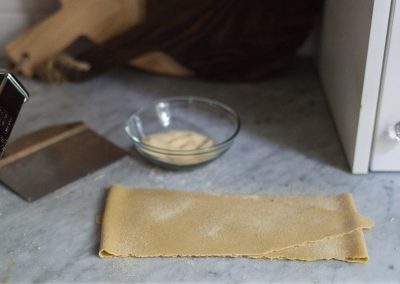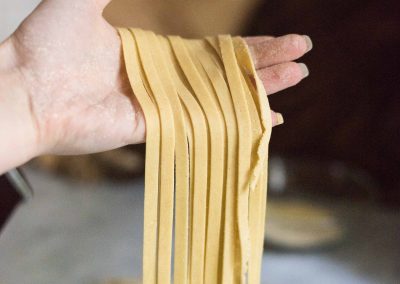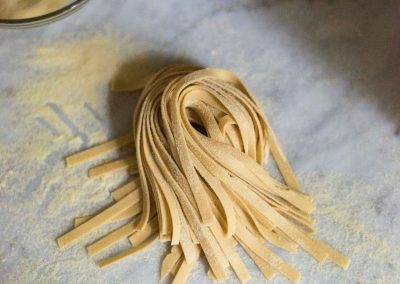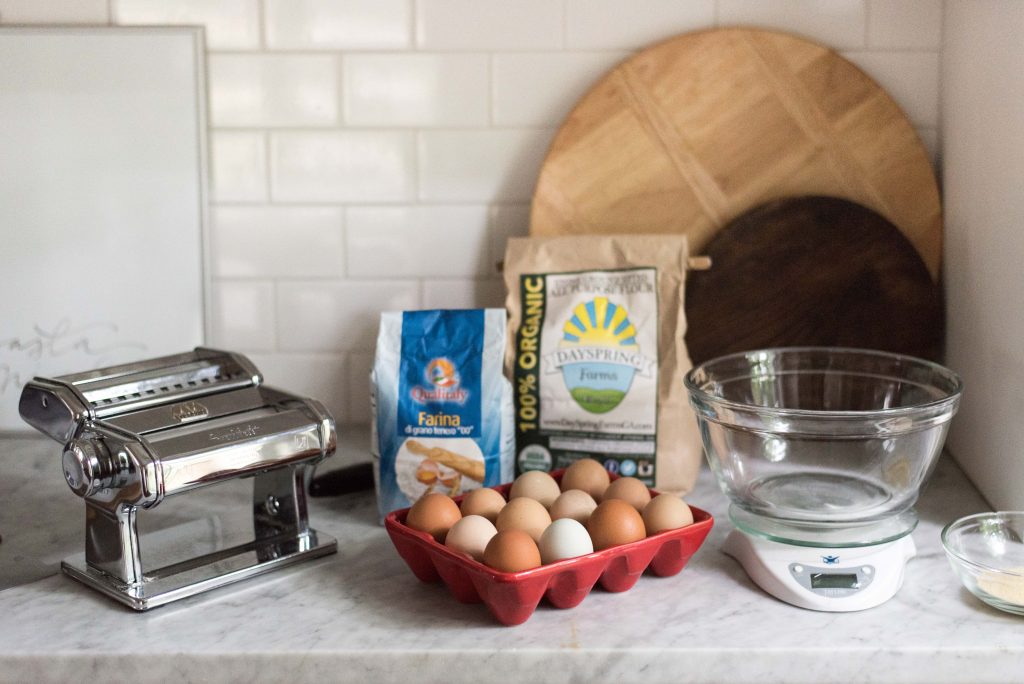
Fresh pasta is one of my favorite things to make. It’s relatively simple, but it takes a little practice. It’s one of those things you have to get a feel for… but a pasta machine definitely makes it easier. For a long time, I rolled pasta by hand (I know…), but I finally got a machine!
I use this Marcato Atlas 150 pasta machine. It’s the same one we used when I taught classes at Bellina Alimentari. It’s Italian and it runs around $60-$70 on Amazon. It has a hand crank, so I still feel like it’s a relatively manual process (in a good way!), but it definitely saves time over hand rolling. This model comes with an attachment to cut the pasta sheets into spaghetti and fettuccine. The pasta attachment for Kitchenaid mixers is a great option, too, but pricier.

You don’t really need any other special equipment, but I do recommend a digital kitchen scale. I use it for tons of things because weighing ingredients is much more precise than measuring by volume. I’ve had this same one for 10 years, and it cost around $20, so that’s a $2 per year…
A note about ingredients: as with all things–but especially simple things–better ingredients usually mean a better result. Good eggs are ideal, though any will do. Some recipes call for extra yolks, but I prefer using whole eggs for ease and preventing waste. I personally like to make my pasta with a mix of Italian “00” (double zero) flour and all purpose flour, but you can certainly make it with just a bag of store brand AP flour. Some folks like to use semolina in their dough, but I usually find the end product to be a bit tougher than I’d like. Don’t worry too much about the different schools of thought on pasta recipes. Unless that’s your thing, then research away!
Once you’ve made your pasta dough, you can use the sheets of pasta for lasagna or a filled pasta, or cut it into noodles. Some machines have cutting attachments, but you can also hand-cut noodles very easily. Lots of options! And then the possibilities for sauce are nearly endless.
So, let’s get started!
Yield: 3-4 servings
Ingredients:
100 g all purpose flour
100 g “00” flour
100 g egg (2 large eggs)
Semolina for dusting
Combine the flours. Make a well in the middle of the flour (either in a bowl or on a clean counter). Add the eggs in the well, break the yolks and lightly beat them with a fork or your fingers. If the eggs don’t weigh 100g, you might need to add a tiny bit of water. Slowly incorporate the flour into the eggs until most of the flour is moistened.
If using a bowl, dump dough onto a clean counter. Start to press together the dough with your hands, incorporating the remaining flour. Using the heels of your hands, knead the dough by pressing it out away from you. Fold dough over on itself, turn 90 degrees, and repeat. Continue kneading until the dough forms a somewhat smooth ball. If the dough is really tough, wrap it in plastic wrap and let it rest for 15+ minutes to let the gluten relax.
Cut the dough ball in half. Cover half and set aside. Flatten the unwrapped half as best you can with your hands or a rolling pin. Set pasta machine on the widest setting (usually “0”). Pass dough through the press–it’ll probably be pretty ugly. Fold it in half and pass it through again at the widest setting. Repeat until you have a smooth, fairly uniform band of pasta. (This process of pressing and folding also helps knead the dough, so no worries if you’re not an expert dough kneader!)
Adjust the pasta machine to one setting narrower (“1” on mine), and pass the pasta through. Repeat, adjusting the machine only one setting each time, until you reach your desired thickness. I typically go to “5” on my machine for noodles. If you’re making a stuffed pasta, you might want it slightly thinner.
When you’re satisfied with your sheet of pasta, sprinkle it with semolina to keep it from sticking, fold over a couple times, and set aside. Repeat the process with the remaining half of the dough ball.
To cut the sheets into noodles, start by folding the semolina-dusted sheets into the desired noodle length. Cut off the folded ends to form even sheets of pasta. Either pass the sheets one at a time through a pasta machine’s noodle attachment, or fold the dough over a couple more times and hand cut noodles with a knife.
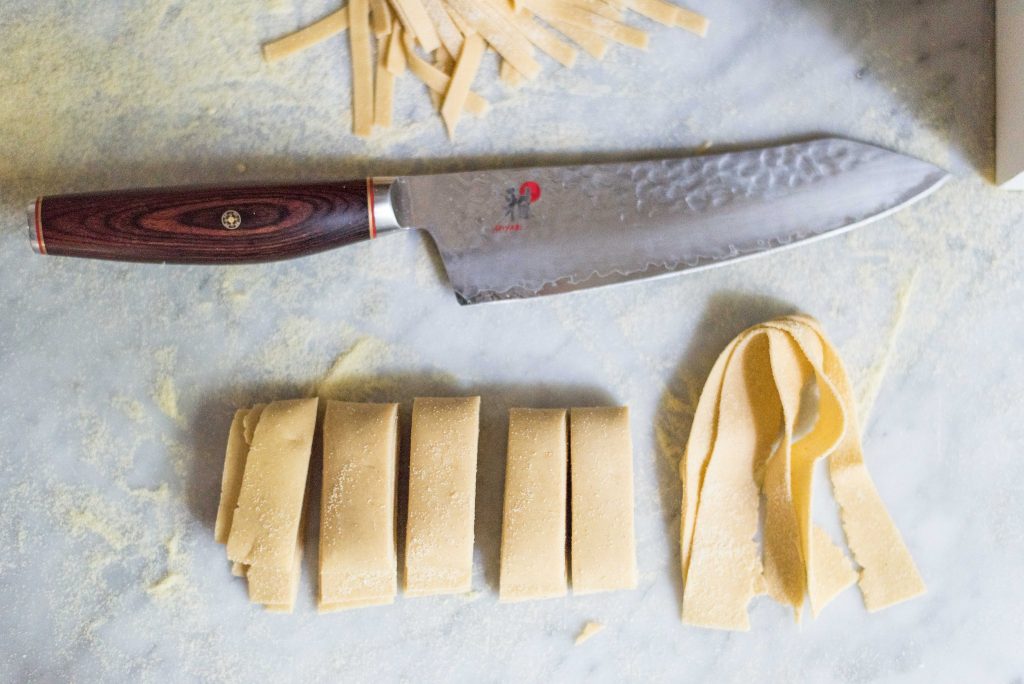
At this point, you can cook the pasta right away, air dry it on a pasta rack, or wrap it to refrigerate/freeze for later (a day or two in the fridge, longer in the freezer).
To cook fresh pasta, bring a large pot of water to boil. The pot should be big enough that the pasta has room to move around while cooking. Generously salt the water–more along the lines of a few tablespoons of salt rather than a pinch. “It should taste like the sea,” the Italians say (supposedly…). Gently separate the pasta noodles before adding them to the water to make sure they aren’t sticking together. Add them to the boiling water and give it a stir to keep them from sticking to the bottom. Cook for 3-4 minutes; the pasta should float to the top.
Strain the cooked pasta, reserving some of the starchy cooking water for your sauce (it helps the sauce bind to the pasta). Either add the strained pasta to your warm sauce right away, or rinse it with cold water (to stop it from cooking more) and toss with oil to keep the noodles from sticking.
Now’s your chance to go wild with sauces and additions. Some of my go-to easy sauces are:
- Browned butter with garlic and lemon juice
- Pesto (adding some of that reserved cooking liquid really helps!!)
- Olive oil, fresh basil, and parmesan
- Cherry tomatoes burst in hot oil with garlic and a splash of white wine
But obviously you can use your fresh pasta in just about any recipe. Buon appetito!
*This page contains affiliate links, which means I make a small percentage of the sale if you choose to purchase something. Thanks for your support!


